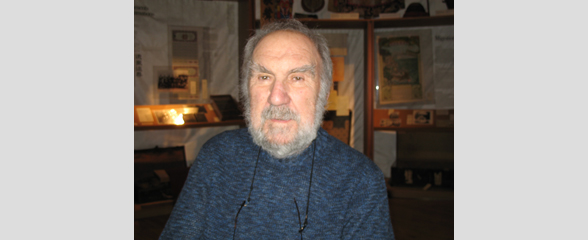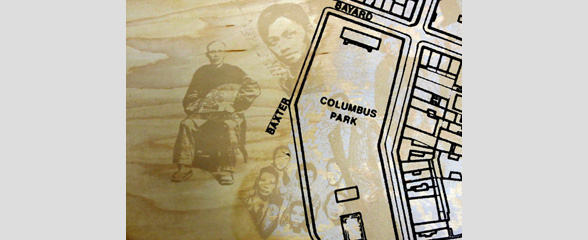Jewish American newspapers

2008.040.006 Oral History Interview with Bert Feinberg December, 21, 2008
Bert Feinberg, native to Brooklyn and long-term resident of New York, describes his experiences in Chinatown and the block often referred to as the Daily Forward block, colloquially named after the Yiddish Daily Forward newspaper. There, Feinberg was employed at a family-owned catering and restaurant business called the Garden Cafeteria. During his time at the Cafeteria between 1949 and 1974, he saw significant demographic changes in the neighborhood. Feinberg initially estimates that the Daily Forward block was ninety percent Jewish residents and businesses. By the sixties, and more so the seventies, he observed significant geographic and demographic expansion in Chinatown due to the influx of Chinese immigrants establishing residency and businesses there. Feinberg recalls the unique mixture of customers who frequented the Cafeteria, such as clientele from the Workmens Circle and the Daily Forward, who created a close-knit community within the restaurant. However, as housing became more expensive and long-established businesses relocated or sold their property, the Jewish community gradually dissipated and disappeared. Feinberg ponders whether Chinatown will experience similar changes as the once predominantly inhabited Jewish community, as he has noticed that with increasing gentrification and higher education, younger Chinese generations are choosing professional careers over sustaining family businesses.

2008.040.007 Oral History Interview with Fani Jacobson January 22, 2008
Fani Jacobson was employed for 53 years at the Daily Forward, a Yiddish newspaper, located in a landmark building near Seward Park. Jacobson was also involved in the socialist organization formerly known as the Workmens Circle (now called Workmens Circle Arbeter Ring). She describes the Lower East Side as a mixed neighborhood comprised of mainly Italian and Jewish sections. She particularly enjoyed the intimate shopping experience and going to the Garden Cafeteria nearly every day for lunch. Jacobson designates 1948 as the neighborhood’s turning point – co-ops were built, Italian residents moved out of the city and onto Long Island, younger generations moved away to avoid living in tenements, and wealthy buyers were able to purchase large pieces of real estate, which were torn down and replaced with luxury buildings. In summary, Jacobson laments the loss of the small town ambience and the disappearance of most of the once-burgeoning Jewish community on the Lower East Side.